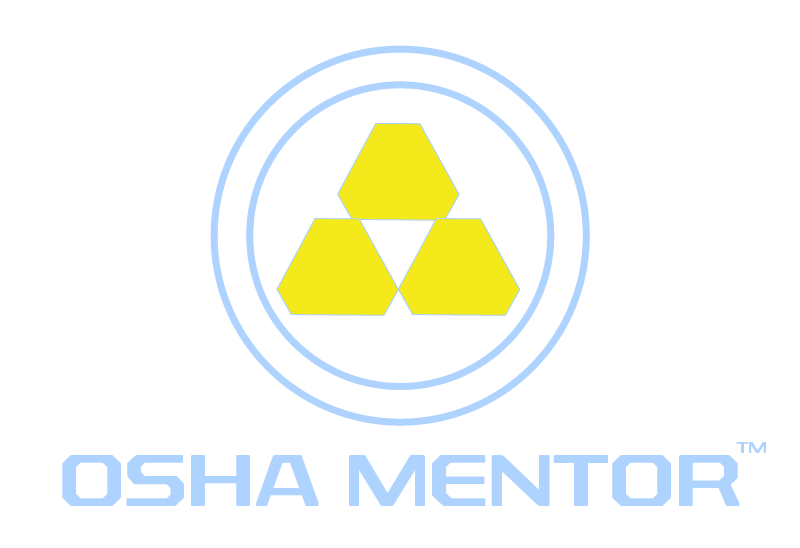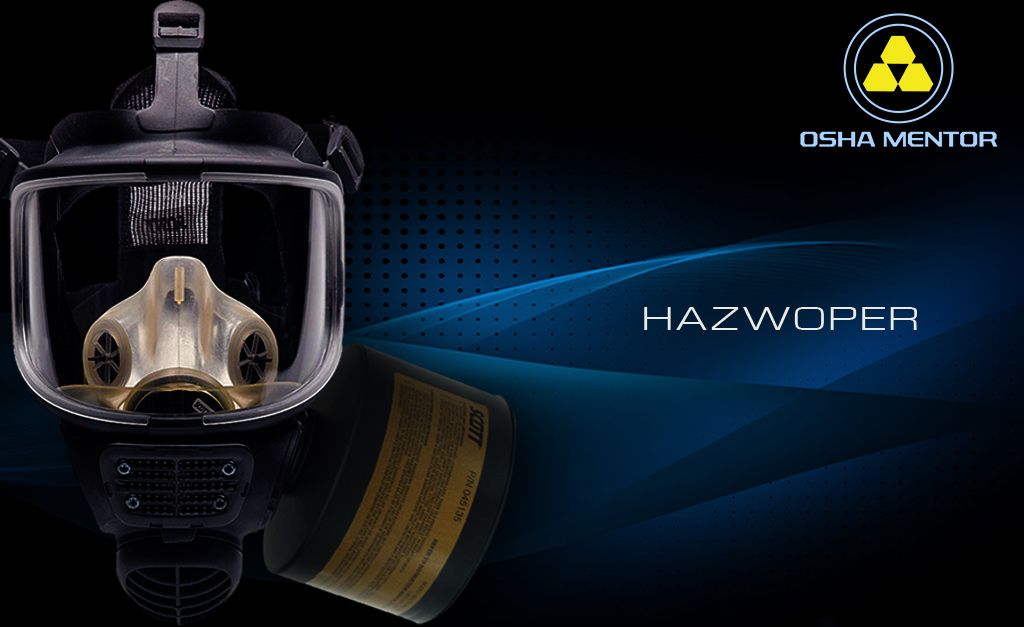
HAZWOPER

What is HAZWOPER?
In 1990, the Hazardous Waste Operations and Emergency Response (HAZWOPER) training standards were promulgated by the U.S. Occupational Safety and Health Administration (OSHA). These regulations are designed to protect workers who are involved in cleaning up hazardous waste sites, responding to hazardous materials incidents, or handling hazardous substances. HAZWOPER regulations are enforced by both OSHA and the U.S. Environmental Protection Agency (EPA), as it involves both labor and environmental considerations. OSHA, found in Title 29 Code of Federal Regulations (CFR) Part 1910.120, primarily focuses on labor-related safety issues, while the EPA, found in Title 40 CFR Part 311, addresses the protection of the environment. Approved OSHA State Plans for the 28 OSHA States also regulate HAZWOPER.
Private and Public Sectors
While many are familiar with OSHA's HAZWOPER regulations, it's essential to recognize that these regulations do not encompass all individuals engaged in activities involving hazardous substances and materials. OSHA's approach is "employer-centric" placing ultimate responsibility on employers to adequately train their employees. However, OSHA's coverage does not extend to all those involved in HAZWOPER operations. Notably, public employees fall outside OSHA's regulatory jurisdiction.
Volunteers, as well as State and local government employees, do not fall under the scope of OSHA's HAZWOPER regulations unless they operate in a state with an OSHA-approved plan. As a result, the EPA developed its HAZWOPER regulation, as outlined in 40 CFR Part 311, to encompass these additional professional groups. The EPA essentially adopted the entirety of OSHA's HAZWOPER regulations in 40 CFR Part 311, making it a near replica of the existing OSHA regulation. However, the distinction lies in the regulatory authority overseeing enforcement, making it a significant development in the regulatory landscape.
Volunteers, as well as State and local government employees, do not fall under the scope of OSHA's HAZWOPER regulations unless they operate in a state with an OSHA-approved plan. As a result, the EPA developed its HAZWOPER regulation, as outlined in 40 CFR Part 311, to encompass these additional professional groups. The EPA essentially adopted the entirety of OSHA's HAZWOPER regulations in 40 CFR Part 311, making it a near replica of the existing OSHA regulation. However, the distinction lies in the regulatory authority overseeing enforcement, making it a significant development in the regulatory landscape.
Private Sector
To determine if your company is subject to the OSHA HAZWOPER standards you will need to consider the following:
1. Location: If your company is located in a state that operates its own OSHA-approved State Plan (there are 28 such states and territories), you will need to follow the regulations established by that state's OSHA program. These state-level programs can have their own HAZWOPER regulations that might be more stringent or different from federal OSHA standards.
2. Type of Work: If your company is involved in activities related to hazardous waste operations or emergency response, you are likely subject to HAZWOPER requirements. This can include tasks such as hazardous waste cleanups, hazardous materials handling and storage, and emergency response to chemical spills or releases.
3. Employee Exposure: You should assess whether your employees are exposed to hazardous substances or engage in activities that put them at risk of exposure. If so, HAZWOPER requirements may apply, and you will need to ensure that your employees receive appropriate training and follow safety protocols.
4. Industry and Sector: Some industries and sectors, such as construction, manufacturing, healthcare, and environmental services, may have specific HAZWOPER requirements based on the nature of their work. It's important to review the regulations relevant to your specific industry.
5. Consultation with Regulatory Agencies: It's a good practice to consult with the relevant regulatory agencies, such as your state's OSHA program, EPA, or National Institute for Occupational Safety and Health (NIOSH), to determine your specific compliance obligations and to get guidance on HAZWOPER training requirements for your company.
1. Location: If your company is located in a state that operates its own OSHA-approved State Plan (there are 28 such states and territories), you will need to follow the regulations established by that state's OSHA program. These state-level programs can have their own HAZWOPER regulations that might be more stringent or different from federal OSHA standards.
2. Type of Work: If your company is involved in activities related to hazardous waste operations or emergency response, you are likely subject to HAZWOPER requirements. This can include tasks such as hazardous waste cleanups, hazardous materials handling and storage, and emergency response to chemical spills or releases.
3. Employee Exposure: You should assess whether your employees are exposed to hazardous substances or engage in activities that put them at risk of exposure. If so, HAZWOPER requirements may apply, and you will need to ensure that your employees receive appropriate training and follow safety protocols.
4. Industry and Sector: Some industries and sectors, such as construction, manufacturing, healthcare, and environmental services, may have specific HAZWOPER requirements based on the nature of their work. It's important to review the regulations relevant to your specific industry.
5. Consultation with Regulatory Agencies: It's a good practice to consult with the relevant regulatory agencies, such as your state's OSHA program, EPA, or National Institute for Occupational Safety and Health (NIOSH), to determine your specific compliance obligations and to get guidance on HAZWOPER training requirements for your company.
HAZWOPER Training Levels
There are 3 different training levels that fall under the auspices of the HAZWOPER regulation.
General Site Workers at Contaminated Sites: (29 CFR 1910.120 (e))
General site workers are those who are involved in hazardous waste cleanup and remediation activities at contaminated sites. Training requirements for general site workers typically include a 40 hour HAZWOPER initial training course, as well as 8 hours of annual refresher training. This training covers topics such as hazard recognition, personal protective equipment (PPE), chemical hazards, and site-specific safety plans.
Emergency Responders: (29 CFR 1910.120 (q))
Emergency responders are individuals who may be called upon to respond to hazardous materials incidents, chemical spills, or other emergencies. The training requirements for emergency responders depend on their level of involvement and responsibilities:
• First responders at the awareness level require 4 hours of training.
• First responders at the operations level need 8 hours of training.
• Hazardous materials technicians require more extensive training, including the 24-hour initial training and annual refresher training.
• Hazardous materials specialists are typically trained to a higher level and may require additional training based on their specific roles.
Workers at Hazardous Waste Treatment, Storage, and Disposal Facilities: (29 CFR 1910.120 (p))
Employees at Resource Conservation and Recovery Act (RCRA) hazardous waste treatment, storage, and disposal (TSD) facilities must receive training relevant to their job functions. Training for RCRA TSD facility workers varies based on their specific roles and the hazards associated with their work. It may include a combination of general site worker training and additional specialized training.
Federal and State Regulations
It's important to note that HAZWOPER training is not one-size-fits-all, and the level and content of training required can vary based on job duties, potential hazards, and regulatory requirements. Employers are responsible for ensuring their employees receive the appropriate level of training for their roles and stay current with refresher training as required by OSHA regulations. Additionally, state-level programs may have their own specific training requirements or variations, so it's essential to consult both federal and state regulations to determine the exact training obligations for your particular situation.
Understandably, these specific training requirements are crucial for ensuring the safety of workers involved in a HAZWOPER setting. Employers and individuals should be aware of these requirements and ensure compliance with both federal and any applicable state-level regulations to protect the health and safety of workers and the environment.
Understandably, these specific training requirements are crucial for ensuring the safety of workers involved in a HAZWOPER setting. Employers and individuals should be aware of these requirements and ensure compliance with both federal and any applicable state-level regulations to protect the health and safety of workers and the environment.
Who has Regulatory Primacy?
Generally, OSHA holds primary authority over private sector employees, while the EPA is the principal regulator concerning environmental protection matters. Government agency employees engaged in hazardous waste operations receive protection either from a state regulatory agency (in approved OSHA State Plans) or from the EPA.
HAZWOPER Hands on Training
OSHA requires appropriate hands on training be provided to any employee(s) for any equipment used in the performance of their job. For a detailed explanation, please click on HAZWOPER Hands-on Training.
Summary
In summary, the applicability of HAZWOPER training requirements to your company or organization depends on various factors, including your location, the nature of your work, and the industry in which you operate. You should consult with the appropriate regulatory agencies to ensure compliance with both federal and state-level HAZWOPER regulations if applicable.
Frequently Asked Questions
Write your awesome label here.

